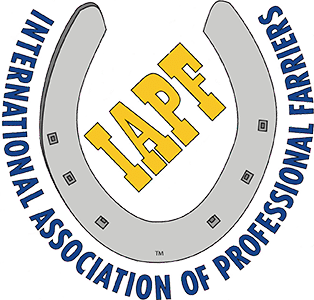Latest News – The Horse
Long Distance Shipping of In-Foal PMU Mares on Hold
The shipment of PMU (pregnant mare urine) mares from farms in the United States and Canada has been put on hold until after the foaling season, unless the shipping distance is very short.
The reason, says Nat Messer IV, DVM, University of Missouri, and a member of an advisory board created by Wyeth Industries in Brandon, Manitoba, is because the mares are in late-term pregnancy and
All New 2004 Parelli Tour on the Road
Pat Parelli’s all new “Love – Language – Leadership” seminar launched Feb. 7-8 in Kissimmee, Fla. The tour includes approximately 24 stops in 2004. Each seminar includes two jam-packed days of natural horsemanship, savvy secrets, and practical training tips that hold the keys to a more powerful and rewarding partnership with horses than you ever thought possible. Pat and Linda Parelli and the
AAEP 2003: Kester News Hour
With researchers worldwide working on solutions to various horse health problems, there is a veritable mountain of information being published continuously. Much of this information is included in AAEP convention presentations, but some of this valuable research was either too new or brief to be included in the program. Thus, the Kester News Hour has new studies and information discussed by
AAEP 2003 Convention Wrap-Up Stories Available Online
Each year, we report more information on the AAEP 2003 Convention than can be covered in the pages of the AAEP Convention Wrap-Up, which mails with the March issue of The Horse. Click here to see the full versions of articles that were excerpted in the
Chronically Laminitic Horses and Restoring P3 Alignment (AAEP 2003)
With chronic laminitis, O’Grady explained that toe-downward rotation of P3 (the coffin bone) often occurs, which results in more pressure placed on the solar corium (the highly vascular tissue from which the sole grows) under the apex of P3. This pressure can disrupt blood flow, altering the rate and even the direction of sole growth.
Junctional Epidermolysis Bullosa (JEB) in Belgian Draft Horses: AAEP 2003
Junctional epidermolysis bullosa (JEB) is an inherited disease that causes skin lesions over pressure points of the body in newborn Belgian foals and results in large areas of skin loss. The disease is a lethal condition and affected foals typically are euthanized shortly after birth.
AAEP 2003: Nutritional Considerations for Athletic Horses
“For athletic horses, energy is the most important nutritional consideration,” said Geor. “Energy is not a nutrient per se, but rather a measure of a feed’s potential to fuel body functions.”
AAEP 2003: Comparative Efficacy of Vaccines
Very little scientific research has been done in the way of comparing the effectiveness of equine vaccines. However, several researchers have been hard at work over the past few years trying to determine if any particular U.S.-registered equine vaccines had advantages over others. It turns out that the serologic responses to–and protection given by–these vaccines varies significantly. Hugh
Safety Issues of Shock Wave Therapy
There’s been a lot of speculation about the analgesic effects of extracorporeal shock wave therapy (ESWT) and radial shock wave therapy (RSWT)–no one has identified the duration or mechanism of analgesia.
Lyme Disease Research
Infection with Borrelia burgdorferi, the causative agent of Lyme disease, is widespread in the northeastern United States, with nearly 50% of adult horses in some areas infected or with a history of infection. Thomas Divers, DVM, Dipl. ACVIM, Dipl. ACVECC, and others at Cornell University recently completed research that confirmed the consistency and predictability of how
Promising New Treatment for Equine Sarcoids (AAEP 2003)
One of the most common and effective treatments for sarcoids is chemotherapy using the drug cisplatin, which is noted for its ease of use, low cost, and high efficacy (up to 90% for sarcoids and 70-90% for carcinomas).
Gastrointestinal Rupture Clinical Signs (AAEP 2003)
Results of the study could help veterinarians know what signs to look for to make a definitive diagnosis of intestinal rupture, thus allowing them to prevent prolonged suffering of the affected horse and additional expense to the horse owner, as euthanasia for a horse with a ruptured intestine is inevitable.
Preventing Gastric Ulcers: Study
White and 10 other veterinarians from private and university equine hospitals in the United States and Canada investigated whether a dose of 1 mg/kg/day would prevent occurrence and recurrence of gastric ulcers in racehorses.
Acyclovir for Treating EHV-1 Myeloencephalopathy
Acyclovir is an anti-viral drug with a high activity and selectivity for herpesviruses. It has been used in equine outbreaks, even though past studies have not established a clear-cut benefit of using the drug.
North Carolina Practitioner Chosen as First “My Vet Matters” Honoree
Ellen Tinsley Hoots, DVM, MS, of Hoof Beats Veterinary Practice in Willow Spring, N.C., has been selected as the January honoree of the American Association of Equine Practitioners’ (AAEP) My Vet Matters Contest. Hoots was nominated for the award by horse owner Denise Bricker of Clayton, N.C. Over 140 veterinarians were nominated during January.
In her nomination of Hoots, Bricker
UI Scientist, Cloned Mules Featured at Seattle Conference
Gordon Woods, DVM, MS, PhD, Dipl. ACT, the University of Idaho scientist who led the research team that successfully produced the first clone in the horse family, will be a featured speaker at the American Association for the Advancement of Science’s (AAAS) annual meeting currently underway in Seattle, Wash.
Idaho Gem, the











